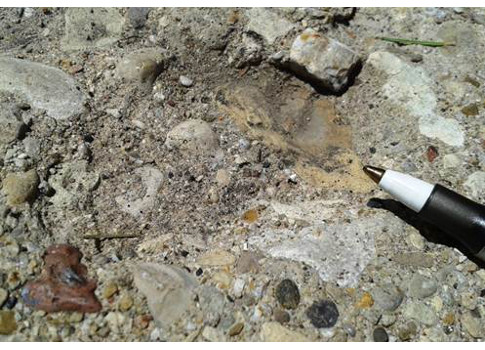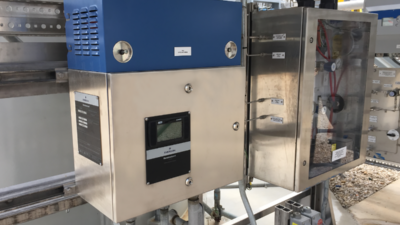Measuring and controlling water vapor in industrial systems is critical. Temperature and pressure affect the physical behavior of materials and systems, while water vapor can also affect their chemistry.

Physical chemical principles that govern water vapor measurement impact industrial components and systems. Water vapor is present in the ambient environment and, as such, will permeate into many critical materials and systems of industrial, agricultural, pharmaceutical, and medical importance.
Why measure water vapor
For example, moisture in plastic pellets during processing can cause extrusion failures while non-ideal levels of moisture in foodstuffs can lead to loss of food quality. Moisture in drugs during storage can cause loss of activity, and humidity in electronic grade industrial gases may lead to semiconductor component failures. Incorrect levels of humidity in medical gases can lead to improper lung function in the clinical environment. The effects of water mentioned above can be attributed to the following behavior:
- Water can act as an acid or a base
- Ability to be absorbed into materials leading to corrosion (see Figure 1a and Figure 1b)
- Expansion when it transitions from a liquid to a solid which can damage mechanical components such as valves, pumps, compressors, as well as the erosion of concrete and masonry structures as shown in Figure 2.
For the above reasons, the measurement and control of water vapor in industrial systems are critical. Concentrations of interest range from 1 part per million by volume (ppmv) or less to 100,000 ppmv, depending on the ambient temperature.
Water vapor behavior
The key to understanding the behavior of water vapor in environments of practical significance is its conformance to Dalton’s Law of Partial Pressures and the Ideal Gas Law. Dalton’s Law states that the total pressure of a gas mixture is the sum of the partial pressures of the separate gas components. For instance, air is comprised of 20.9% oxygen, 78% nitrogen, and about 1% water vapor, and other gases. As such, these components contribute to the total air pressure in the amounts of their compositions as shown below in equation 1:
Equation 1: Pt = pp1 + pp2 + ppn
Where:
Pt is the total pressure of the system, and pp1, pp2, and ppn are the various components of the gas mixture up to the nth component.
The Ideal Gas Law states that the pressure of a gas or its comprising components is equal to the number of gas molecules of each component represented as moles divided by the total volume of the mixture. Moles divided by volume is an expression of concentration as shown below in equation 2:
Equation 2: ppi = (ni/V) RTk
Where:
ppi is the partial pressure of the individual components of the gas mixture
ni are the number of moles of each gas component
V is the total volume of the system
R is the universal gas constant
Tk is the temperature on the Kelvin scale.
Calculations from water vapor measurements
A fundamental measurement of water vapor pressure is dew point, which is the temperature at which water vapor is in equilibrium with its liquid phase. Frost point is the temperature at which water vapor is in equilibrium with its solid ice phase. Chilled mirror hygrometers (CMH) measure dew and frost points directly by means of a reflected ray of light which detects the presence of the liquid and solid phases formed on a chilled mirror where the surface temperature is precisely measured and controlled. The dew or frost layers are controlled so their growth is non-changing in time, and the system is at true equilibrium. CMH are considered to be fundamental standards that can measure water vapor pressures over 6 orders of magnitude, more than 1 million fold from less than 1 ppmv to over 100,000 ppmv. Figure 3 is an example of a CMH. The Magnus Formula, that relates water vapor pressure to dew or frost point temperature, is given below in equations 3 and 4:
Equation 3: ew = (1.0007 + 3.46 10-6 P) (6.1121) e [17.502 Td/ 240.9 + Td]
Equation 4: ei = (1.0003 + 4.18 10-6 P) (6.1115) e [22.452 Tf/ 272.55 + Tf]
Where:
ew = partial pressure of water vapor over water in millibars
ei = partial pressure of water vapor over ice in millibars
Td = dew point temperature in C
Ti = frost point temperature in C
P = total pressure in millibars.
The first term of both equations, roughly 1 has to do with the enhancement factor which corrects for the exceptional behavior of water vapor at high total pressure and low ambient temperature where water vapor deviates from the Ideal Gas Law. For the majority of applications the enhancement factor approaches 1, as indicated in the above equations.
Once the water vapor pressure is known, the water vapor concentration can be determined by the Ideal Gas Law. Water vapor concentration is expressed in mass/L, or moles/L.
Sample Question 1:
The dew point of a gas sample is measured using a chilled mirror hygrometer to be 12.0 C. What is the partial pressure of water vapor in the sample? What is the absolute humidity in grams/L if the system is at 25 C?
Using equation 3 for partial pressure, the partial pressure in the sample is 10.6 Torr.
Using equation 2 for absolute humidity, the absolute humidity is 0.0103 g/L.
Another measurement unit of importance is relative humidity, usually measured as a percent. Relative humidity is a measure of how much water vapor can be contained in a carrier gas, such as air before saturation occurs and condensation ensues. Relative humidity is therefore a measure of the interaction between materials and water vapor in the environment. The higher the relative humidity is, the greater the interaction. Examples include the absorption of water vapor by textiles and agricultural products, pharmaceuticals, and engineering materials. Relative humidity is defined in equation 5:
Equation 5: %RH = (ew/es) 100%
Where:
ew = partial pressure of water vapor over water in millibars
es = the saturated water vapor partial pressure at the ambient temperature of the process.
Therefore relative humidity can be calculated from measured air temperature and dew point.
Sample Question 2:
What is the relative humidity of an air sample at 23 C if the dew point of the sample is 19 C?
Using equation 3 to determine the water vapor pressure at 19 C and at 23 C equals 22.063 millibars and 28.21 millibars, respectively. Using equation 5, this equals 78.2% relative humidity.
The next unit of humidity measurement is mixing ratio. The mixing ratio is defined as the mass of water vapor divided by the mass of dry air it is contained in. Units are therefore mass/mass, therefore dimensionless.
The mixing ratio is defined as:
MR = 621.9907 ew/(P – ew)
Where
ew = partial pressure of water vapor
P = total pressure
The coefficient varies with the molecular weight of the carrier gas, e.g. 621.9907 for air, 8,936 for hydrogen.
Note that ew can be determined from the dew point, which can be measured directly by a chilled mirror hygrometer. Mixing ratio also requires the measurement of total pressure.
The final measurement unit for humidity is ppmv or parts per million by weight (ppmw). These units are defined as follows. Again, ew can be measured by a chilled mirror hygrometer. The total pressure, P, must be measured as well.
ppmv = 106 ew/(P – ew)
ppmw = 106 0.62199 ew/ (P – ew)
Sample Question 3:
A sample of air is humidified and has a ppmv value of 4,500 at a total pressure of 1013.25 millibars (1 atmosphere of pressure). What are the dew and frost point?
4,500 = 106 ew/(1013.25 – ew); ew = 4.539 millibars. Following the Magnus Formula, the dew point is -4.08 C, and the frost point is -3.61 C. Note that the vapor pressure over ice is always higher than liquid water.
The total pressure of the above sample of air is increased to 2026.50 millibars by the introduction of dry air. The volume remains unchanged. What is the new ppmv? What is the new dew point? What is the new frost point?
The new ppmv value is 2245 ppmv. Both the dew point and frost point remain unchanged because the concentration is unchanged by the introduction of dry air. This is because the volume is kept the same.
The original sample of dry air at a value of 4,500 ppmv is compressed by a volume change; the volume is decreased by 50%. What is the new ppmv value? What is the new dew point?
The new value remains at 4,500 ppmv because both the numerator and the denominator are multiplied by 2 following the volume change since volume and pressure follow an inverse relationship as expressed in Boyle’s Law. However, the new dew point is 5.5 C because the concentration of water molecules increases by 2, which increases the water vapor by 2.
Water vapor measurement technologies
Water vapor can be measured using a wide range of technologies. These technologies can be broadly segmented into two classes; those that employ first principle measurements and those that use secondary principles. Examples of the former are chilled mirror hygrometry and spectroscopy, and those of the later variety use dielectric changes in organic and inorganic media, polymers, and inorganic oxides, respectively. Figure 4 is an example of a polymer-based transmitter with replaceable probe units used in compressed air that can measure dew point, RH, pressure, and air temperature in the same unit. First principle devices tend to be less subject to drift, while secondary standards are more prone to drift, requiring more frequent calibration. For a sensor to be made traceable, there must be an uninterrupted record of calibrations through the operating life of the sensor.
Table 1 summarizes some of the humidity measurement technologies used in the industry.
The concentration of water vapor can vary by as much as 1 million fold from less than 1 ppmv water vapor to greater than 100,000 ppmv. It is important to understand the physical chemical principles that govern the behavior of water vapor, the key units of measurement, and comprehending humidity principles as they impact industrial components and systems.
Dr. Gerald Schultz is the Chief Scientist at Edgetech Instruments Inc. He has been working in the field of sensor technology and science for the past 35 years, most of which has been in the field of humidity sensors, and measurement. Edited by Emily Guenther, associate content manager, Control Engineering, CFE Media, [email protected].
MORE ADVICE
Key Concepts
- Water vapor measurements
- Different water vapor technologies
- The principles of humidity and the impact in industrial settings.
Consider this
Are there other important measurement units to consider for industrial systems?



